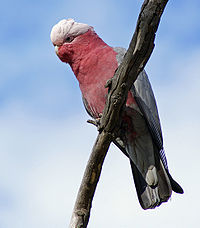
Photo from wikipedia
The purplish bifurcate mussel Mytilisepta virgata is widely distributed and represents one of the major components of the intertidal community in the northwestern Pacific (NWP). Here, we characterized population genetic… Click to show full abstract
The purplish bifurcate mussel Mytilisepta virgata is widely distributed and represents one of the major components of the intertidal community in the northwestern Pacific (NWP). Here, we characterized population genetic structure of NWP populations throughout nearly their whole distribution range using both mitochondrial (mtDNA cox1) and nuclear (ITS1) markers. Population genetic analyses for mtDNA cox 1 sequences revealed two monophyletic lineages (i.e., southern and northern lineages) geographically distributed according to the two different surface water temperature zones in the NWP. The timing of the lineage split is estimated at the Pliocene- mid-Pleistocene (5.49-1.61 Mya), which is consistent with the timing of the historical isolation of the East Sea/Sea of Japan from the South and East China Seas due to sea level decline during glacial cycles. Historical sea level fluctuation during the Pliocene-Pleistocene and subsequent adaptation of mussels to different surface water temperature zones may have contributed to shaping the contemporary genetic diversity and deep divergence of the two mitochondrial lineages. In contrast to mtDNA sequences, a clear lineage split between the two mitochondrial lineages was not found in ITS1 sequences, which showed a star-like structure composed of a mixture of southern and northern mitochondrial lineages. Possible reasons for this type of mito-nuclear discordance include stochastic divergence in the coalescent processes of the two molecular markers, or balancing selection under different marine environments. Cryptic speciation cannot be ruled out from these results, and future work using genomic analyses is required to address whether the thermal physiology of these mussels corresponds to the deep divergence of their mitochondrial genes and to test for the existence of morphologically indistinguishable but genetically separate cryptic species.
Journal Title: Molecular phylogenetics and evolution
Year Published: 2020
Link to full text (if available)
Share on Social Media: Sign Up to like & get
recommendations!